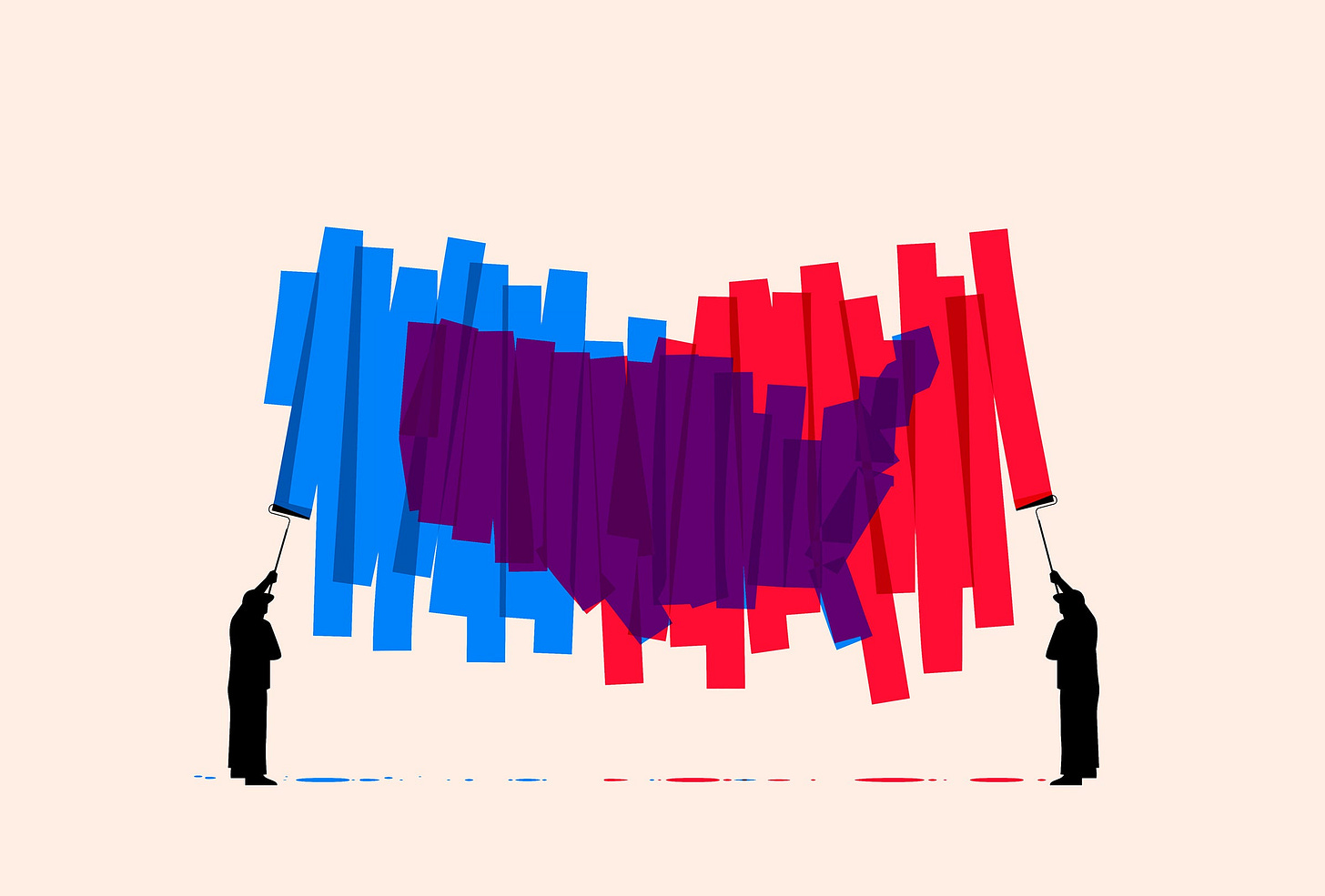America is Purple! Not Red, Not Blue!
How America’s Two-Party System Keeps the Nation Balanced

Why Bipartisanship is Essential for Stability, Continuity, and Broad Representation
The American two-party political system, comprising the Democratic and Republican parties, was designed with the intention of fostering a balanced and stable governance. The idea behind this system is rooted in the concept of compromise and the belief that government should represent a wide spectrum of views and interests, rather than being dominated by extreme positions.
1. Encouraging Moderation and Compromise
Purpose of a Two-Party System: The two-party system is meant to encourage both parties to appeal to a broad base of voters. Since most Americans hold views that are somewhere in the middle of the political spectrum, parties must moderate their positions to win elections. This naturally encourages the parties to find common ground, leading to policies that reflect a broader consensus rather than the interests of a small, extreme minority.
Avoiding Extremes: A system dominated by extremes can lead to polarization, gridlock, and instability. By encouraging compromise, the two-party system aims to prevent any one faction from imposing its views unilaterally, ensuring that the policies enacted are more representative of the entire population.
2. Stability and Continuity
Political Stability: A two-party system tends to create a more stable political environment. With only two major parties, power alternates between them more predictably, reducing the chances of sudden, drastic shifts in policy that could occur if a multitude of smaller, more extreme parties were constantly gaining and losing power.
Continuity in Governance: When both parties have to work together to pass legislation, it ensures a degree of continuity in governance. Bipartisan support often means that policies are more enduring and less likely to be overturned with each change in administration, providing a stable environment for businesses, citizens, and international partners.
3. Representation of Diverse Interests
Broad Representation: In a two-party system, each party must try to represent a wide range of interests within their coalition. This leads to the inclusion of different viewpoints within each party, promoting debate and compromise within the parties themselves, as well as between them.
Bipartisanship as a Necessity: Since neither party can always have complete control, they are often required to work together to pass legislation. This bipartisan cooperation ensures that multiple perspectives are considered in the legislative process, ideally leading to more balanced and effective governance.
4. Preventing Political Fragmentation
Avoiding Fragmentation: In a multi-party system, small, extreme parties can gain disproportionate power, particularly in coalition governments. This can lead to fragmentation and instability, as these smaller parties might hold the balance of power and push for policies that do not reflect the broader electorate’s views. The two-party system helps to avoid this by encouraging larger, more inclusive parties that need to appeal to a wider audience.
Middle Ground Policies: By necessitating that parties appeal to the center to win elections, the two-party system helps to produce policies that are more centrist and pragmatic, reflecting the middle ground where most voters reside.

By working together across party lines, lawmakers can address the nation’s challenges more effectively, uphold democratic values, and build a stronger, more unified country.
Conclusion
The American two-party system was designed to encourage moderation, compromise, and stability in governance. By focusing on broad, bipartisan support rather than catering to extremes, this system aims to create policies that are more representative of the entire population and less prone to radical swings. While the system is not without its flaws, it serves as a mechanism to ensure that the voices of the majority are heard, and that the government operates in a manner that is both stable and reflective of the diverse interests within the country.


